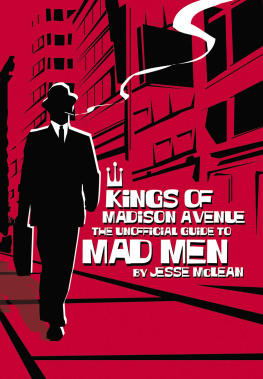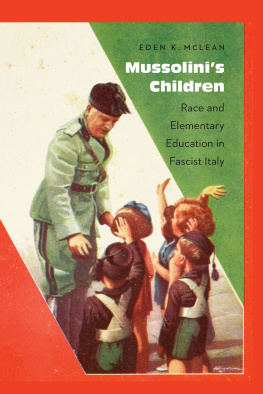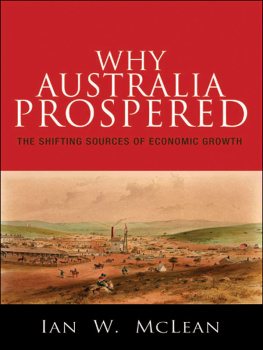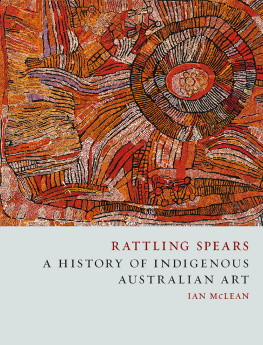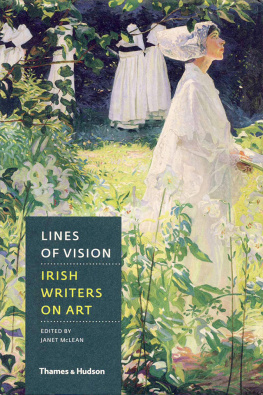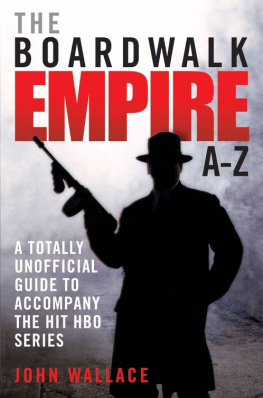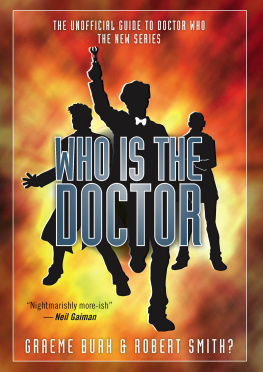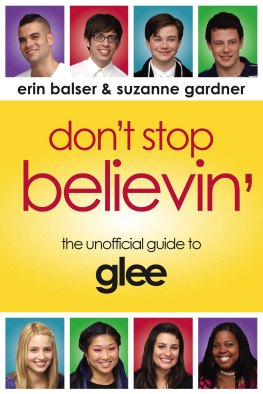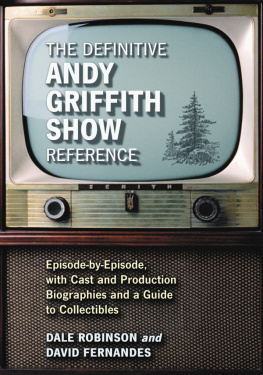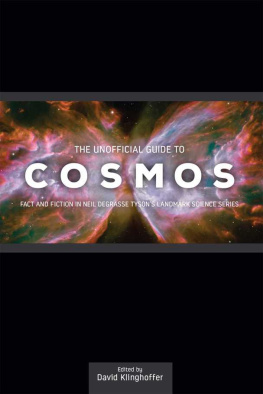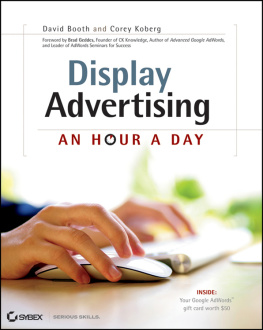Acknowledgments
Writing a book of any kind is a solitary experience, but preparing it for publication is clearly another matter. Id like to take a moment to thank everyone at ECW Press who helped, including but not limited to: copy editor Emily Schultz and proofreader Crissy Boylan, who kneaded the lumps out of my prose; Tania Craan, who designed the interior; Jen Knoch for sourcing the photos; typesetter Mary Bowness; publicists Sarah Dunn and Simon Ware; co-publishers Jack David and David Caron; and my editor Jen Hale, an early champion of this project and an unflagging supporter, without whom this book would not have been possible or half as much fun.
Id also like to thank my good friend Keith Berry for designing the cover and making me look classy and James Salisko for his keen advice and relentless cheerleading.
Last but certainly not least, Id like to thank the one who stood by my side while I toiled on this book from the first day to the last my dog Bear. You were right about Frank OHara. Im glad I listened.

How the Kings Roll:
WHAT YOU CAN EXPECT
For my money, watching an episode of Mad Men provides the pleasure of a well-written show set in a fascinating era (close enough for current-day relevance, far enough removed to feel exotic) but also inspires a confidence not unlike Don Draper himself cool, patient, methodical, and always with an eye on the big picture. No matter where the story goes, no matter how seemingly oblique or digressive the drift, as a viewer Ive always felt secure. Much like Don describes advertising in the pilot episode, Ive always felt that everything is going to be okay.
I had only felt that way once before when I gave myself up to a television show Michael Manns Crime Story, created by Chuck Adamson and Gustave Reininger. As I watched Mad Men I couldnt help but compare the two. They both take place in a similarly glamorous, stylized universe; both are concerned with the struggles of a conflicted protagonist as well as those of the surrounding characters. And while both were critical darlings, Mad Men reaped the rewards (and longevity) that the other could not manage past two seasons.
Crime Story carved out a peculiar place in the prime-time schedule of 1986. Sleek, violent, and historically canny, this epic tale of a Chicago cops battle to bring a rising mobster to justice always felt out of place in the quick-cut mentality of 80s television. But audience members willing to invest time in the series not only enjoyed a satisfying entry in the police procedural genre, they also saw subtler dramas unfold, like the cost of career dedication, alcohol abuse, and the strain of interracial romance against the backdrop of the Civil Rights movement.
An even greater correlation between the two TV shows is an infinite patience in pacing; both reveal the larger narrative and allow delicately observed moments room to breathe. In this, both series feel more like one-hour movies than episodic television, and relate a sure-handedness that allows for storytelling sidesteps that enhance the overall viewing experience instead of detracting from it.
It is there, however, that the similarities end. Crime Story received a great deal of acclaim for the glitzy yet gritty approach (and derision for a pervasive violence that many thought bordered on exploitation). The show struggled in the cutthroat major network atmosphere, steadily losing the audience it reaped from a postMiami Vice debut. A benefit of airing on a boutique network like AMC is that Mad Men has never had to worry much about Nielsen ratings, an allowable indulgence provided that the shelves in the award cabinet continue to buckle. The list of laurels granted to Mad Men is extensive, while Crime Story only managed three Emmy nominations, one for cinematography and two for outstanding achievement in hairstyling. And while history has treated Crime Story well (cited by Time magazine as one of the best television shows of the 80s), the cultural impact of Mad Men was immediate and profound.
I suppose that is why I felt I had to write this book. A show as well written and steeped in historical detail as Mad Men demands further discussion. The investigation of shifting societal mores are more than a framing device; they actually inform every episode in a way that current events inhabit our own daily lives. When you watch a program that builds historical events into a story with a sly confidence like the Volkswagen ad campaign or the American Airlines crash in Jamaica Bay then it can only enhance the viewing as that context is explored more fully. Mad Men is a show that asks profound questions such as the very nature of identity or the role of gender in determining status and success and it benefits the shows fans who examine those questions not only with regard to the characters and the times of the show but in a comtemporary context as well.
As a fan of Mad Men, I sought out a single volume that would combine all of these questions and concerns but also celebrate the show and augment the viewing experience, a book that looked behind the scenes at the forces that conspired to create the show, and the people who brought it to life; a book that assessed the literary and cinematic antecedents that helped inspire this amazing show. I looked high and low, but I couldnt find the book I wanted.
So I wrote it.
After unearthing interesting information in biographies of Mad Men cast members (including who started their acting career in a stage production of Winnie the Pooh and which actor spent high school as a socially outcast Goth), well move on to the episode guide. I will examine the thematic aims of each installment, discuss what I have seen, and reflect on what the fans are talking about around the water cooler (or online, this centurys version of the water cooler). Included in each episodes assessment will be sidebar observations and historical footnotes, including a Period Moment (a quick look at one of the many cultural signposts that populate each episode), Ad Pitch (a review of the campaigns created by the Sterling Cooper group and how close they are to actual promotions of the time), Manhattan Real Estate (the history of the citys geographical landmarks and which of them still stand in the New York of today), The Philosophy of Mad Men (dialogue that reveals the characters and their philosophies, and, more often than not, provides sound words to live by), and Cocktail of Note (a perfect drinking guide complete with recipes and suggested servings).
Fans of history just about every Mad Men fan I know will enjoy the chapters devoted to historical context. Interspersed throughout the guide, these are more detailed examinations of the events and movements that serve as a more than just background throughout the series. Historical evaluations in these Context entries include Helen Gurley Brown and her bestselling book Sex and the Single Girl, the contentious presidential campaign between John Kennedy and Richard Nixon, the changing face of New Advertising as spearheaded by the Doyle Dane & Bernbach agency, and an often overlooked influence on the Civil Rights movement, Dr. Howard Thurman.
Also peppered throughout the book are reviews of influences and the direct and oblique connections to

